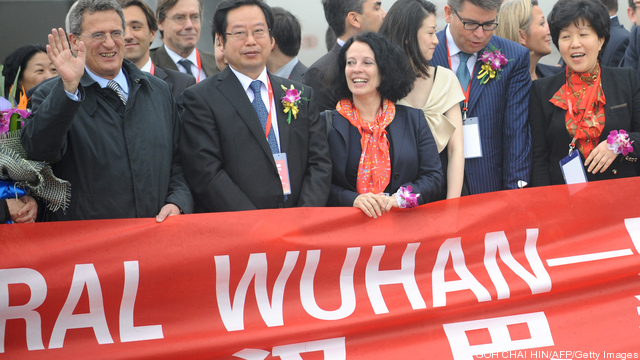
I spent last week at AISTech – one of the largest conferences of the year for the iron and steel industry – and conversations with attendees centered on how steel producers can implement new technology to remain competitive in the market. As companies around the world expand city skylines, put more planes in the sky and ships in the sea, and produce enough electronics to put them in the hands of millions of consumers, steel producers are being asked to meet a skyrocketing demand. In fact, by the year 2050, world steel production levels are expected to double from 2010 levels. Facing this rapid growth and the mounting global concerns about climate change, steel mill operators around the world are on the hunt for more reliable, efficient and productive sources of power to boost steel production capacity while simultaneously reducing the environmental impact of their operations.
Established in 1958, Wuhan Iron & Steel Group Corp (WISCO) is the first “giant” iron and steel corporation to operate in China since the founding of the People’s Republic of China in 1949, ranking fourth in production output in China and fifth globally. At the time WISCO and GE Energy began their business relationship in 2007, WISCO was making approximately 40 million tons of iron and steel a year, operating with traditional steam boilers. A rising demand for steel was driving the need for more electricity, eventually requiring up to 10 billion kilowatt hours per year. That level of energy consumption was unsustainable for WISCO and a costly drain on the public grid. Spurred by new legislation setting stringent regulations on steel mill efficiency in China, WISCO engaged GE Energy to develop and execute an innovative approach to power generation that would increase energy efficiency and profitability, all while reducing emissions and maintaining a high level of production.
GE engineers knew that integrated steel plants often produce one or more combustible ‘waste’ gases – including blast furnace gas (BFG) – that can be repurposed on site to generate electricity. Using this as the cornerstone of its approach, GE’s cross-functional global team developed new engineering technology, designing a power generation system that runs on blast furnace gas. The resulting solution incorporated multiple innovations in a BFG operation, allowing WISCO to get more megawatts from the same amount of waste gas – reducing the amount of electricity the company used from the local grid.
The plant’s new power production system featured GE 9E heavy duty gas turbines, 9A5 generators, and MCL 1805 and MCL 1407 fuel-gas compressors, among other product solutions. The plant was installed in two phases, with the first becoming operational in December 2009, and the second coming online almost eight months later. The results bore out the wisdom of WISCO’s selection of the combined-cycle power plant option. Wuhan City is now reaping significant energy savings – nearly 100 MW of power that it doesn’t have to supply from the public grid. Capturing the waste gases to generate low-carbon power also cut down on the steel mill’s greenhouse gas emissions. This allows WISCO to benefit from cleaner development mechanism (CDM) emissions trading. The potential reduction in carbon dioxide is immense: 2 million tons per year.
WISCO’s retrofit for Wuhan City was approved as an energy savings and environmental protection project under China’s 11th Five-Year Plan, while also receiving the endorsement of the World Bank. Additional results achieved to date include:
- 330 megawatts generated – enough to power more than 265,000 homes
- 2 million tons of CO2 reduced per year – equal to removing more than 391,000 cars off the road
- 100 megawatts saved by Wuhan City – enough to provide electricity for 80,000 average homes
- 20 million tons of iron & steel produced yearly – sufficient to build 2.4 million steel-framed homes
- $32 million in annual operational savings
Our alliance serves as an example of WISCO and GE Energy’s commitment to tackling today’s energy challenges with a keen awareness of environmental responsibility. We’re proud to have worked with WISCO to develop innovative processes that will contribute to meeting the worldwide increase in demand for steel, while realizing a better planet.
Ryan Derouin is GE Energy’s North America Metals Leader with additional duties as the global account executive for ALCOA, RioTinto ALCAN, ArcelorMittal (NA), and Nucor Steel. In this role, he is responsible for driving accelerated growth across the Energy portfolio, using both organic and inorganic strategies and aligning GE’s technologies and solutions to help customers meet their objectives and solve key problems.
For more information on this project, please visit www.ge-spark.com.
To learn more about the WISCO case study how GE is working with its customers in the metals industry, listen to a recording of Ryan Derouin of GE Energy, available here.
